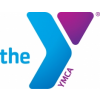PURPOSE OF POSITION The primary purpose of the Exercise Physiologist is to provide leadership in formulating activity levels appropriate for each participant to safely enhance the physical capacity and emotional quality of life for patients with a wide variety of medical issues, particularly those with cardiac and pulmonary problems.
The Exercise Physiologist provides leadership in patient education with emphasis on exercise and assists with risk factor modification and promotes healthy lifestyle changes.
In addition, provides leadership and patient oversight in Wellness # RESPONSIBILITIES # EXPECTATIONS Supervises and monitors all patient progress, goals, and treatment plans throughout their participation Evaluates patient#s clinical status and reports applicable information to other healthcare providers Leads a variety of exercise modalities##### Conducts functional capacity test and writes the exercise prescriptions Performs cardiopulmonary stress tests as needed Develops and maintains effective working relationships with other hospital personnel Instructs patients on home exercise programs Keeps abreast of recent advances in Cardiac Rehab and related fields through continuing education courses, current literature, and professional meetings Performs other functionally related duties as assigned This job may include travel and short or long (12 hour) work shifts Creates and fosters a work environment that is consistent with the Mission, Vision and Values of the Aultman Health Foundation Supports strategic organizational goals Abides by the Aultman Code of Conduct at all times # Job Requirements Minimum Education : Graduate of a state approved program with Masters in Exercise Physiology Required Credentials, License and / or Certifications : # Current BLS and ACLS certification.
Clinical Exercise Physiology (ACSM) or Certified Cardiac Rehab Professional (AACVPR) Certification preferred. All qualified applicants will receive consideration for employment without regard to#race, color, religion, sex, age, national origin, identity, family status, gender, disability, or veteran status.
WORKING CONDITIONS : Physical Requirements : # Evidence of excellent health and health habits including nonsmoking status and a physical capacity of moderate levels of exercise.
See also attachment Hazardous Exposure Category : Category 1 Subject to frequent interruptions and changes in priority of duties throughout the day.
Sitting / standing / moving about during working hours# # PHYSICAL REQUIREMENTS ADDENDUM # PURPOSE : # To identify specific functions job requirements and work environment factors that could affect job performance.
Check all factors that are present as essential job requirements and check whether the factor is performed. # O Occasionally 0- 33% of the work shift or## 0- 32## repetitions.
F Frequently 34-66% of the work shift or 32-200+ repetitions. C Constantly 67-100% of the work shift or 200+ repetitions.
N Not essential job requirement. # C########### Standing C########### Walking O########### Lifting (70 pounds) O########### Carrying (70 pounds) O########### Pushing (70 pounds) N########### Climbing with (70 pounds) O########### Stooping / Bending O########## Twisting / Turning O########### Kneeling / Squatting O########### Crawling O########### Reaching Up / Reaching Forward # Additional information concerning physical requirements for the position : Please list any additional requirements HAZARDOUS EXPOSURE CATEGORY # CATEGORY I############# Includes tasks that involve exposure to blood, body fluids, or tissues.
All procedures or other job-related tasks that involve an inherent potential for spills or splashes of, or mucous membrane or skin contact with blood, body fluids, or tissues are Category I tasks.
Use of appropriate protective measures is required for every employee engaged in Category I tasks. # # CATEGORY II############# Includes tasks that involve no exposure to blood, body fluids, or tissues, but employment may require performing unplanned Category I tasks.
The normal work routine involves no exposure to blood, body fluids, or tissues but exposure or potential exposure may be required as a condition of employment.
Appropriate protective measures will be readily available to every employee engaged in Category II tasks. # CATEGORY #III######### Includes tasks that involve no exposure to blood, body fluids, or tissues, and Category I tasks are not a condition of employment.
The normal work routine involves no exposure to blood, body fluids, or tissues (although situations can be imagined or hypothesized under which anyone anywhere might encounter potential exposure to body fluids.
Persons who perform these duties are not called upon as part of their employment to perform or assist in emergency medical care or first aid or to be potentially exposed in some other way.
If you are unsure of your category,# You can reference the Bloodborne Pathogen Exposure Control Plan and Appendices A,B, and C (Standard Precautions) on Policy Tech or contact Debbie Shaffer. #









